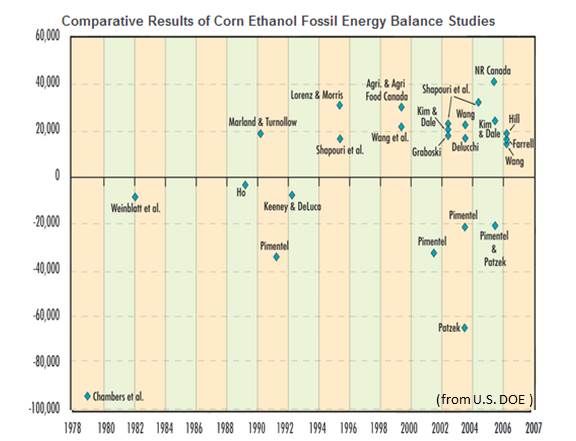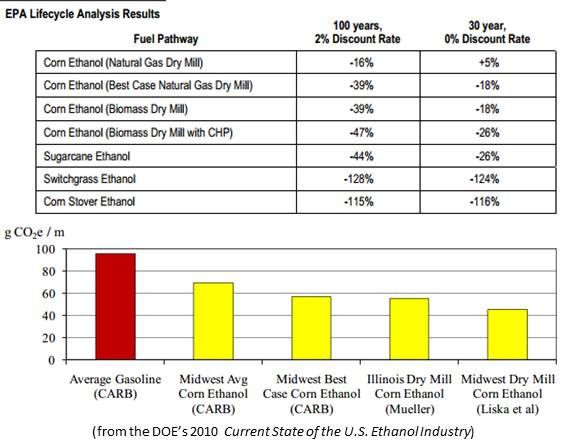Attention, Union of Concerned Scientists, Sierra Club and other environmental advocates: Green Plains Renewable Energy (GPRE) CEO Todd Becker wants you to come to his Iowa corn ethanol plant.
“We are vilified as an industry,” Becker said. “We’ll show them what we do and let them make their own decision.”
GPRE is the fourth biggest U.S. ethanol producer and 621 on Fortune’s list with $3.5 billion in 2013 revenues, ten refineries, 790 million gallons of capacity and 600 employees.
As mandated by the Renewable Fuel Standard (RFS), ethanol is 10 percent of the annual 135 billion gallons of light duty oil-based gasoline sales, despite the lapsing of the ethanol tax credit.
The RFS, like other renewables mandates, is an appropriate policy to grow the emerging industry’s demand, Becker said. “But that means 13.5 billion gallons that is not oil-based. At $3 per gallon, that is $40 billion in revenue the oil industry doesn’t make.”
E-15, a 15 percent ethanol/85 percent oil-based gasoline blend approved by Congress, has repeatedly been proven safe for cars made after 2001, Becker said. But it has been blocked because what he called the "unholy alliance" of big oil, big food, and big auto claims it will nullify vehicle warranties.
Obstruction of E-15 is holding back GPRE as well as other ethanol producers such as POET Technologies, Valero, Monsanto and Archer Daniels Midland.
“And it would only take a microchip and a seal to allow U.S. vehicles to run on E-85,” Becker said, but “big oil is fighting back hard because every 1 percent more is 1.3 billion gallons and about $4 billion in revenue that they don’t get.”
Corn ethanol was vilified by environmentalists, Becker said, when a 2005 study by Cornell Professor of Ecology and Agriculture David Pimentel and U.C. Berkeley Professor of Civil and Environmental Engineering Tad W. Patzek concluded it requires 29 percent more fossil energy than the fuel produces.

“There are studies clearly showing we give back two parts of energy for every one part of energy that we use,” Becker said. “The one bad one was by Pimentel. It was never right, it is outdated, he won’t address it and he is not a scientist,” he claims.
Becker referenced a 2008 U.S. Department of Agriculture (USDA) study that concluded “The ratio is about 2.3 BTU of ethanol for 1 BTU of energy inputs, when a portion of total energy input is allocated to byproduct and fossil fuel is used for processing energy. The ratio is somewhat higher for some firms that are partially substituting biomass energy in processing energy.”
“A preponderance of recent studies using updated data about corn production methods,” a U.S. Department of Energy (DOE) 2010 study concluded, “demonstrates a positive energy balance for corn ethanol.” Corn ethanol “has made the transition from an energy sink (i.e., more energy used than energy produced) to a moderate net energy gain.”
Cellulosic ethanol like that which is being pursued by Mascoma and Codexis, the DOE study found, “uses less fossil fuel and more energy-efficient feedstocks, such as fast-growing trees, corn stover, grain straw, switchgrass, forest product residues, and municipal waste.”

Becker insists that arguments that corn ethanol’s lifecycle greenhouse gas (GHG) emissions are not neutral are also wrong. “We are a closed loop. We emit CO2 into the atmosphere and it helps grow corn.”
“EPA results suggest that biofuel-induced land-use change can produce significant near-term GHG emissions,” according to the DOE 2010 study, but “displacements of petroleum over subsequent years can ‘pay back’ earlier land conversion impacts.”
The DOE study’s corn ethanol life-cycle analysis included growing and transporting feedstocks, producing and distributing ethanol, and burning it in vehicles. There is “a substantial offset in GHG produced by ethanol plants,” the study reports. And the California Air Resources Board, it noted, found a “30 percent to 50 percent reduction in GHGs provided by corn ethanol.”
"Almost 1 billion people worldwide are going hungry," Center for American Progress intern Max Frankel wrote recently on the food-versus-fuel controversy, "but plans remain in place to use about 40 percent of America's corn crop, the world's largest, for biofuels purposes."
Re-evaluations of land use, the food-versus-fuel issue and water-use concerns have similarly come down in corn ethanol’s favor, Becker and ethanol advocates claim.
Not according to Frankel. "By focusing our national investments on corn ethanol," he wrote, "we prevent other technologies, including other biofuels such as cellulosic ethanol and micro algae biodiesel, which are low greenhouse gas emitters, from competing with corn ethanol."
Ethanol is going to be needed to meet the updated 54.5 miles per gallon Corporate Average Fuel Economy (CAFE) standards set by the Obama administration, Becker said. “In order to get that mileage, you need high combustion fuel, and that requires high octane content. The only place to get cheap octane is ethanol.”
The industry can presently produce 14.6 billion gallons per year of 113-octane corn-based ethanol and provide 11 percent of the U.S. fuel supply. “If the fuel retailer can sell that further 1.3 billion gallons at a dollar discount and make money and save the consumer money, you can see where the fight is.”
There are places corn ethanol can fit into the near-term transportation future, according to electric vehicle advocate Paul Scott. It may be preferable to compressed natural gas for heavy-duty vehicles driving beyond current battery capabilities. And it is “absolutely better to use biofuel-blended oil-based gas in plug-in hybrid electric vehicles than 100 percent oil-based gas.”



